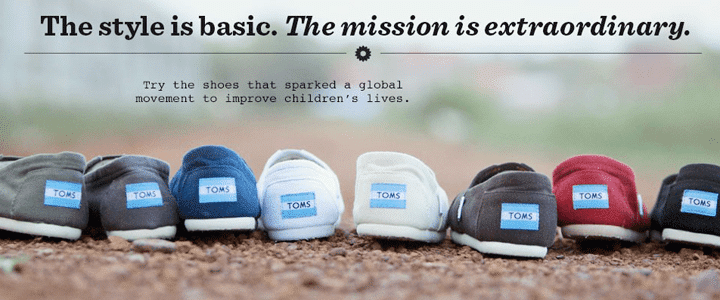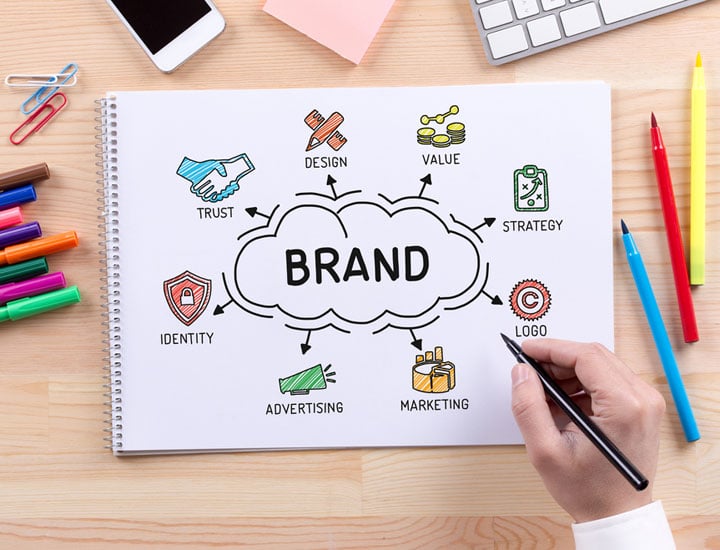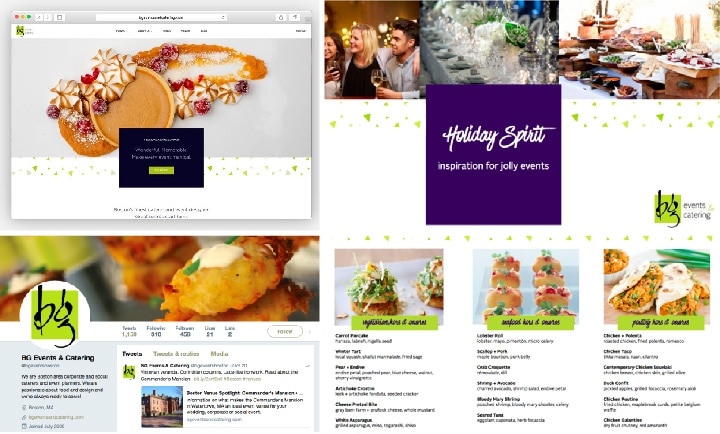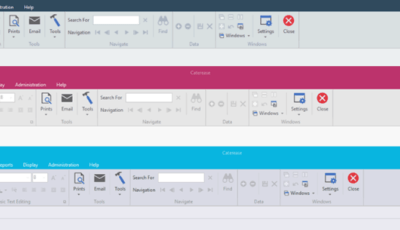Your Brand: The Most Underrated Tool in Your Sales Arsenal

Take a 30-minute drive.
Do you think you’ll see more Starbucks stores or neon signs flashing “WE CATER”?
I’m not a betting woman, but I’d be willing to bet it’s the latter. Show me a restaurant that doesn’t cater and I’ll show you a zebra without stripes. It used to be just the corporate drop-off caterers that were losing business to restaurants, but today these places are making strong plays for larger full-scale events.
One of the strongest, if not the strongest, tools that you can use to fight this battle is your brand. When we talk about brand, we don’t just mean your name, your logo and your website. A brand is so much more than we consciously think about. The reason you lose events—or the problems and challenges you face—may show up differently, but the root cause of them is often branding.
Let’s take a look at a few examples:
(1) You lose a 50-person lunch event because the competition dropped their prices and came in at $2.00 per person lower than you. You know you offer better-quality food and service than the competition, and yet you lose the sale.
Reason you think you lost the event: price
Reason you lost the event: branding
(2) After a tour, a bride emails you to tell you she chose the farm that’s 30 minutes away instead of your new farm. Your farm includes more add-ons and amenities in the facility rental and has better grounds and views. Your venue rental fee is also $1,500 cheaper, and yet you lose the sale.
Reason you think you lost the event: other venue must be giving something away
Reason you lost the event: branding
(3) A high-end company is having an extravagant event at one of the nicest venues in town. You know you can exceed expectations even though you aren’t known for doing these events. Your menu and pricing are better than the competition, and yet you lose the sale.
Reason you think you lost the event: client is too stuffy and just doesn’t get it
Reason you lost the event: branding
Each of the examples above would turn out differently with a strong brand. A weak brand will allow clients to view your products and services as a commodity, whereas a strong brand will get clients to sign with you when it doesn’t seem like the rational thing to do.
Let’s bring the conversation out of the catering world for a second.
Think about the companies to which you feel connected. What feelings do you associate with them? Off all the different choices you have, why do you choose to buy the brands you do? Your clients are making similar decisions when they choose (or don’t choose) to hire you. You need to give your clients something deeper to connect with—something that makes the buying decision not about price. Your brand has to have a promise that your clients can count on and an image they want to be associated with.
In the rest of this post, we’re going to take you down a few levels into branding to help you understand:
- What a brand is in general
- How brands connect with clients
- The finer details of a brand
Once we’ve broken it down, we’ll help you figure out how to:
- Build your brand
- Share your brand properly with clients
What is a Brand?
What is a brand? Good question. And don’t worry—most everyone asks the same question. It’s one of those topics where people think they know what it is, when in reality it’s a very difficult concept to truly grasp. It can be easier to understand a brand when we’re talking about big consumer brands like Apple, Starbucks and Nike but nearly impossible to grasp when we’re talking about our own companies.

Branding should speak to what clients care about, not just the products and services they receive from you. In order to build a lasting and meaningful brand, you need to uncover your client’s/company’s values. What do they/you care about? What gets them/you out of bed in the morning? What do they/you value more than anything else?
Humanize it. Think about the people who have been in your life the longest, or the people you have the deep connections with. The strongest relationships we have with others are the ones founded on values and beliefs. These relationships will stand the test of time and not waiver or break when times get hard. Relationships formed on surface-level items, like hobbies or appearance, are much more likely to crumble when the pressure is on.
Apply it. Take some time to really dig into who you are as a company. Surface-level things like attributes or services aren’t where you want to connect. And you want to make sure that the values you connect on are woven into the DNA of your business. Fake values and promises will be sniffed out by clients and may end up ruining your brand (thanks to social media).
Why Brands Matter
There are two primary drivers to buying decisions: connection and image.

Connection
Human beings are wired for connection, and I’m not just talking about connecting with other humans. It should come as no surprise, then, that people will make buying decisions based on the connection they feel to a brand. Your clients care about your brand because they want to feel connected to something.
Companies like Tom’s Shoes, Bombas, and Warby Parker are great examples of connection. These companies all run on the 1-for-1 model—buy a pair of shoes, socks, or eyeglasses and they will donate a pair to people in need. If Tom’s Shoes raised their prices by 10% tomorrow, do you think they would lose customers? If a company produced the exact same shoes that they do and sold them for 20% cheaper, do you think people would buy the cheaper pair?
Tom’s Shoes customers are connected to them by core values. This deep level of connection makes it extremely difficult for customers to jump ship to another brand. And the impact for the company? Easier sales, higher margins, more opportunity for product line extensions, higher customer retention, and the list goes on and on.
Image
Connection matters, but so does appearance. Every single choice we make throughout the day reflects who we are as individuals. When your clients hire you to cater or produce their event, it says something about them to their bosses, their coworkers and every single person who attends the event.
People who buy Tom’s Shoes want to be viewed as caring and generous. People who buy Nike want to be viewed as competitive and determined. Clients are tying their image to yours when they choose to buy your product, and with events as meaningful and powerful as weddings and corporate galas, you’d better believe your brand image is important.
Understanding why clients connect with brands is a good first step. Before we can get into how to build a brand that connects with clients, we need to understand a bit more about branding and its two major components: brand identity and brand image.
The Two Parts of Your Brand
There are two important parts of your brand: brand identity and brand image.
Your brand identity is what you say about yourself, whereas brand image is what clients think about you.
There are countless pieces that comprise your brand identity, including your:
- Products and services
- Goals and mission statement
- Beliefs, values and morals
- Marketing (website, email, blog, social media, advertising, graphic design, sales scripts, etc.)
- People (culinary, serving staff, operations crew, drivers)
- History and story
In effect, your brand identity includes all things you can control about your brand.

Humanize it. Your brand identity is you, from start to finish. Everything about you, from the clothes you wear and the car you drive to whether or not you gossip about others is your identity. They are the pieces that let the world see who you are.
Apply it. Think about the list from above. What does your office look like? When clients walk in the door, what’s the first thing they see? Is your serving staff well-groomed? Are your vehicles rusty?
You can control your brand identity. Brand image is another story.
Brand image is what your consumers think about you. It is uniquely formed in each individual’s mind and can be from firsthand experiences or interactions with your company or what they’ve heard about you from other people. It’s how they view your brand.
Brand image is made up of interactions with your brand, such as:
- Hearing an ad on the radio
- Viewing your website
- Listening to a friend talk about his/her experience with your company
- Seeing a review online
- Discovering a company vehicle at a bar in the middle of the day
Here’s the tough part. You can control the messages you use in marketing and the energy you put out into the world, but you cannot control how they are received by others.
Humanize It. You hear from your Aunt Felicia that she has a new team member at work, Molly. Molly shows up late every day, leaves before anyone else leaves, wears the same pair of pants and never takes the time to style her hair. Without having met Molly, you’re now likely to think she is lazy, has no work ethic, and doesn’t value her job. It doesn’t matter that you haven’t met Molly—your brain will naturally fill in the blanks and finish the story. What if I told you that Molly is a single mom? She can’t afford expensive daycare, but she’s found a place 30 minutes from her house where her daughter is well cared for. The trouble is their hours restrict her ability to get to and from work. And she hardly has time to think about anything but her daughter. Your image of Molly was already formed, and regardless of the fact that you were terribly wrong about her, it’s going to be harder for you to change your mind about her.
Scary, right? Let us make it scarier.
Of the two pieces (identity and image), the only thing that matters is brand image…the one you cannot control.
Told you it would get scarier.
So what does this mean for you? You need to accept that there are things that affect your business that you cannot control. That actually applies to all areas of our lives. What’s important is that you focus on what you can control—which, with regards to branding, is your brand identity.
How to Build Your Brand (Finally)
Just like a house, when building a brand, you should spend the most time on the foundation. Without a strong foundation or core, your brand and your company won’t be able to grow in the ways that it could. When it comes to brands, a strong foundation simply means one that is real.
A strong brand connects the company with its clients on a deeper level, which means the best place to start with defining our brand is figuring out who you are and what you value. Ask yourself the following questions:
- What is the history of the company?
- What products/services do we offer and what are the benefits of these products/services that our clients receive?
- What are our one-, three- and five-year goals as a company?
- What are our company’s core values and why are they important to us?
When you go through this process, consider asking other team members these questions and compile their input. The more people you include and the more information you gather, the more real and complete your brand identity will be.
Once you’ve done this, it’s time to start building that connection with your clients. Using this information, you can determine your target market, position yourself as the solution to their catering needs and figure out how to connect with them.
Once you have your values nailed down and how you’re going to connect with your clients, the rest is easy. It’s a matter of designing a logo and writing copy/content that lets the essence of your company shine!
Marketing Your Brand
Once you have your brand defined, it is important that you clearly communicate it with your clients. Before you start making changes, make sure you have figured out:
The intended message—exactly what you want to say to your clients.
The method—exactly how you want to say it to them.
Consistency is important here. Colors, fonts, word choice, messaging—if they are consistent, they will begin to build trust with your clients, as well as build brand recognition and brand awareness. Think through all the ways that clients interact with your brand and write them down. We’ll give you a head start with this list:
- Websites & social accounts
- Advertisements & taglines
- Sales scripts
- Staff (culinary, serving staff, operations crew, drivers, etc.)
- Menus
- Plating and presentation
- Venue
- Vehicles
Don’t forget about your team. It’s crucial that your team understand your brand and messaging. They should already subconsciously know what the brand is since they work for the company. But when you make it a conscious conversation, you will clearly define the brand and be well on your way to achieving consistency.

You Made It!
Building a strong brand isn’t easy, so if you’re unsure or overwhelmed, take some comfort in the fact that most of us are! Take your time with this process and get it right—it’s worth it.




